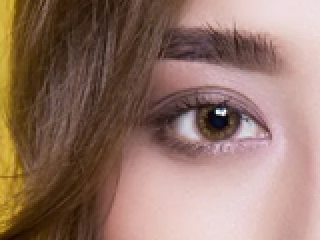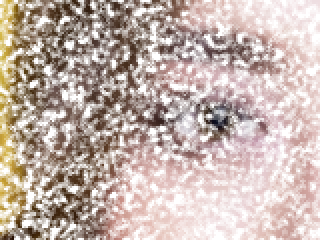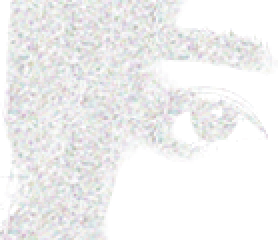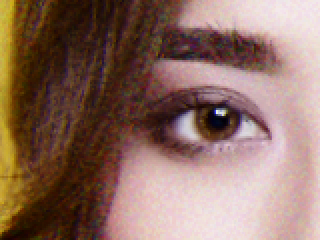-
Posts
13,757 -
Joined
-
Last visited
Everything posted by Phil Rhodes
-
OK, let's do the numbers. A 400-foot roll of 35mm film has an area of (400 × 12 × 25.4 × 35) ÷ 1000000 = 4.267 square metres. This overlooks the value of the silver in any material punched out to create sprocket holes. I bet that's recovered, although the cost of doing so will affect the value of recovered silver in ways we can't predict. Assume price of silver is about US$0.742 per gram. Assume 5g per square metre. 4.267 × 5 × 0.742 = 15.853. B&H charges $327.50 for a 400-foot roll of 5219, so even if we found an ideal, no-drawbacks replacement that was free, it would make film less than 5% cheaper.
-
I'm also not very sure if replacing the silver is likely to reduce the cost significantly. Do we know how much silver there is in a foot of film? Even if we found an ideal low-cost replacement, the manufacturing process is still hugely complex and demanding of exquisite precision, not to mention based in a high-income country. Could it ever realistically be cheap?
-
Not so many of those anymore. And no more than trace silver in colour film, anyway. It's washed out at the bleach stage. If it's bleach-bypassed or proper old-style black and white, then there's silver in it, but not in normal colour film. And yes, they recover the silver from the bleach, including just running old black and white scrap film through the bleach bath to strip out the silver.
-
Procedural grain emulation is hard from the ground up. Any reasonable example is going to involve generating some random noise as a seed for it, and generating high quality random noise is surprisingly hard work for computers. The noise filter in After Effects is not fast. Visualising the results as an image is a common way of analysing the quality of a random number generator, since problems tend to show up as patterns in the image, which is exactly what we can't have for this sort of application. Good random numbers: Bad random numbers: Personally I don't think that doing a physically accurate simulation is particularly important. After all, shooting a grey card and scanning it is a physically accurate simulation, and depending on how it's composited with the original it can look absolutely horrible. I have noticed that the sort of grain people seem to like actually isn't that realistic anyway; it's often a lot less colourful than real grain. Fashionable grain simulations actually end up looking like the sort of grain created by ENR or bleach-bypass print processing, which introduce a sort of black cellular noise to the image based on the chunks of silver in the image. It's my observation that real grain on colour film looks a lot more like video noise than people like to admit. I base this on the fact that I once spent the best part of a year sitting in a suite at a manufacturer of film scanners and grading equipment using, as test material, some of the original scans from a film which was Oscar-nominated for its cinematography, but which had been shot super-35 on 500-speed film. Having spent many hundred hours pixel-peeping that material on quality displays, I think I can claim some quite close familiarity with what film grain looks like. P
-
In a desperate attempt to bring this to some sort of worthwhile conclusion: Chance, I don't think anyone here wants anybody to be treated unfairly, or for anyone to be unpleasant to anyone else. The reason this stuff starts to lose its audience, though, and I suspect the reason you're finding a slightly tough crowd here, is that you're using an example of someone losing a court case as evidence of some grand conspiracy within society to support that person's position, whereas in reality it's evidence of exactly the opposite. You risk giving the impression that you're expecting the rate of prejudice and bigotry in society to be zero. It's obvious that no such society has ever existed and none ever will, and the fact that we don't live in that society is no evidence of a shadowy movement to disadvantage certain groups of people. We push for utopia in all kinds of ways; by inventing things, by building things, by making art, by exchanging ideas. We do that, though, in the knowledge that it will forever remain an unscratchable itch. We may approach it, like a spider climbing a well which advances only half the distance to the top every day, but if the court case described in this thread is evidence of conspiracy to you, you're going to spend the rest of your life tilting at windmills. - Phil
-
In an ideal world one would very slightly distort the image underlying the grain layer to approximate the way the regions of colour are made out of individual crystals. This can be roughly approximated with a compound blur which makes the underlying image blur in areas where the grain layer is brightest. Also, luma key the grain so it appears mainly in the darker areas. For instance, based entirely on basic tools available to everyone: Original image (all shown at 200%): Build grain layer. Start with noise: Blur slightly: Sharpen to create grain boundaries, and desaturate. Optionally, at this stage, scale; smaller generally helps, blue should be larger than red: Luma-keyed blur layer: Inverse luma-keyed grain layer. Composite with appropriate transfer modes and trim intensity to taste. Before:
-
I regret the need to continue this rather sordid discussion any further than has already been continued, but this subject deserves clearer thinking than this. Gay people in America (at least, in New York) can already get married. This is not about some grand moral crusade. This is about wedding photos. I'm not saying don't enforce the law; enforce it, as a matter of general principle. This photographer sounds massively unpleasant, and far from the bastion of kindness and forgiveness religions often claim to push for. Still, let's not pretend this makes any very large difference to the grand scheme of things. It also, as Matthew says, is not, or certainly should not, be about generalising about which group is worst-off. Based on the results of this court case it's hard to claim that anyone, beyond this photographer, is supporting the marginalisation of anyone else. The state appears to have acted entirely properly and precisely as any reasonable lawyer would have expected it to; this is no evidence of a grand conspiracy against gay people or anyone else. Quite the opposite. If this was an attempt to bully anyone it failed spectacularly. These things vary internationally, but considering how poorly young white working-class boys, most of whom are either not gay or will turn out not to be gay, do in some parts of the world, it's clear that basing our thinking on what we might call traditional victim groups is no longer adequate - as if group membership should affect anyone's right to anything anyway. I would point out also that the case in question was actually brought by the photographer against the jurisdiction in order to avoid being fined, not any potential client of the photographer against her. P
-
That's sort of the point; I suspect it won't actually have that effect. The problem is fairly easy to understand if you posit whacking someone over the head with a club in the hope they'll wake up agreeing with you. I incline toward Karim's approach on this. You can't make people like you and you can't legislate opinion, and I think there are a lot of situations where that makes it worse. Unfortunately the assumption that this stuff is simple is a large part of why it's so hard to solve.
-
The problem there is if one has already accepted a job before finding something out about it that one does not like, which I suspect is something we've all hit, albeit in very different circumstances. Perhaps one could retroactively make some sort of excuse; depends on the circumstances. From the other perspective, I can't say that I would have bothered to bring a court case about it. We've had several people turn up to this very forum looking to hire people based on their gender, which is illegal in a large majority of the places both the poster and anyone reading the post are likely to be. I can't say it ever occurred to me to instruct a solicitor, for the very good reason that doing so is not likely to change anyone's views and quite likely to entrench them. It's also a spectacular waste of the court's and my time and money under circumstances where what's really happened is that someone's been impolite to someone else - someone I've now no interest in dealing with anyway.
-
My view on this is that I wouldn't necessarily want someone with those opinions photographing my wedding anyway. I think the main issue here is that we'd prefer it if everyone was nice and tolerant to one another. Unfortunately you can't make someone tolerant by forcing them to do things they don't want to do - quite the opposite, probably. As such I find myself torn between the idea that people shouldn't be free to arbitrarily disadvantage people, and the equally valid and powerful reality that the result here probably doesn't really change anyone's view or meaningfully alter the situation long term. I have no idea what the right solution is, other than that religion in general is a bad idea that doesn't help anyone. In most first-world countries, people in general are becoming less religious, and that can only be a good thing. P
-
For what it's worth, Matthew, I feel much the same way about some of the huge deserts of the American southwest, which I never get to shoot. There are so many shades of greener grass.
-
Jeez, that looks like something out of The Lighthouse. Paging @Jarin Blaschke!
-
I should have said, it's very nice stuff. I remember (in about 2001) when I bought my first real camera and took it out to a local country park, it was a morning like that.
-
I was complaining that the entire world round here looks like this...
-
As you allude to here, the concept of these things having a native ISO in this context is fairly arbitrary. All modern sensors have amplifiers on them which take the (minute) currents actually created by the converted photons and inflate them to a level that's comprehensible to an analogue-to-digital converter. The behaviour of all that creates what looks like a native ISO, but really, it's just a matter of the engineer's opinion as to what a reasonable level of noise looks like. It is quite possible to specify the absolute noisefloor of an imaging sensor and the engineer's reference materials from them often do so. Usually it's a single digit number of electrons in a competitive modern cinema sensor with a full well capacity of tens of thousands. Often there's no such number given for a finished camera. It was once common to do this for broadcast cameras but it isn't a widely discussed or understood specification now. I'm not sure why, though given many modern cameras are very heavily reliant on digital noise reduction it might not have much meaning. Phil
-
My opinion means nothing because I'm not really a cameraman of any kind, let alone a director of photography, but I'll happily take a well specified super-35mm sensor over any of the bigger stuff because, in my view, the microscopically slight differences (I hesitate even to say improvement) are so trivial as to be massively outweighed by the inconveniences on almost all productions. If you're perpetually working on stuff where your resources are effectively infinite, fine, but even then I think it's really just the tsar putting gold on his bread.
-
Bah, humbug!
-

Filmic skin tones - "Jennifer's Body"
Phil Rhodes replied to Steven Buckwalter's topic in Lighting for Film & Video
Whatever the conclusion is, I think that image is a particularly wonderful example of the complexity of human skin tones. It makes me wonder if that rosy blush in her cheeks is for real, or just the most subtle and carefully-done makeup. -

Are NFT's useful to filmmakers? And what the hell are NFT's?
Phil Rhodes replied to Daniel D. Teoli Jr.'s topic in Off Topic
A non-fungible token is intended to be a unique and non-alterable record of who owns something. It uses the same underlying technology (a blockchain) as a cryptocurrency such as bitcoin or ethereum. This is less complicated than it sounds. The idea is that each record in a chain has a serial number which is based, in part, on the serial number and content of the record before it. Thus, any change to a record in any given chain would change the serial numbers of all subsequent records, making it effectively impossible to retroactively alter a record without the tampering being obvious to everyone. It's not bad technology; it's pretty secure. If there's a problem it's that verifying the integrity of any particular record can require significant computer resources, since every record in the chain must be examined to verify that its serial number and content properly reflects the serial numbers and content of the records preceding it. This has quite a large carbon footprint and has been criticised on that basis. Phil -

A bunch of pictures while I was tearing down a 16S
Phil Rhodes replied to Duncan Brown's topic in ARRI
-
Given that nobody here personally knows any of the people involved, my understanding is that Van Diemen have done some maintenance work Adnan is not happy with, or at least that's the core of the dispute. Given that nobody here has any specific information on the state of the lenses before or after the work was done, what was promised, or what was expected, it's very difficult for anyone to comment meaningfully. I have no opinion either way, but many people will be aware that Van Diemen has not survived very nearly forty years in the business by misbehaving, so there will certainly be two sides to this. Phil
-
Yes. Simply specifying "300dpi," which is what's commonly specified, is completely meaningless. One could provide an early-90s computer screen grab 300 pixels across and accurately claim it's 300dpi if you print it an inch wide. It's more reasonable if you assume "300dpi at a reasonable size" but without knowing what the page layout will be, there's a lot of wiggle room in "reasonable." Many people who work in publishing have been told to ask for "300dpi" with very little understanding of what it means. Generally my working policy is that images supplied for print should be several thousands of pixels across and that seems to work out OK. And that's for photos. If we're doing text and graphics and we want text to look really good, especially when it will be printed on a good inkjet or commercial offset printer, 600 to 1200dpi is a better target. Magazine pages are generally output at that sort of resolution to keep the body text looking crisp. In these days of 12-plus-megapixel digital cinema cameras outputting images 8K across and more, the resolution gap between moving, still and printed images is starting to close in any case. P













